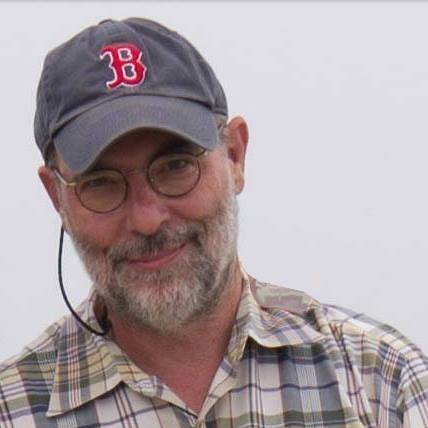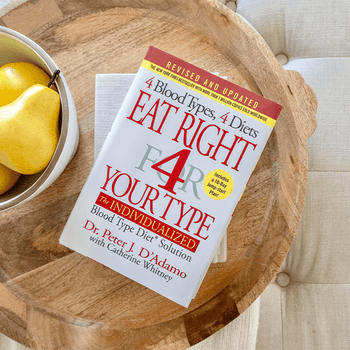Ask Dr. D'AdamoAsk Dr. D'Adamo Index | Latest Entry | Pull a Random Question |
Questions of A More Technical NatureKarl LandsteinerQUESTION How long have we known about blood types? How were they discovered? Who discovered them? ANSWER The discovery of the ABO blood types can be said to be the work of one man, Dr. Karl Landsteiner. This is what the Nobel Lectures, a series in English of all the Nobel lectures from 1901, with biographical notes, prize citations and presentation speeches (Publisher: Elsevier Publishing Company, Amsterdam) says about him: Karl Landsteiner was born in Vienna on June 14, 1868. His father, Leopold Landsteiner, a doctor of law, was a well-known journalist and newspaper publisher, who died when Karl was six years old. Karl was brought up by his mother, Fanny Hess, to whom he was so devoted that a death mask of her hung on his wall until he died. After leaving school, Landsteiner studied medicine at the Univerisity of Vienna, graduating in 1891. Even while he was a student he had begun to do biochemical research end in 1891 he published a paper on the influence of diet on the composition of blood ash. To gain further knowledge of chemistry he spent the next five years in the laboratories of Hantzsch at Zurich, Emil Fischer at Wurzburg, and E. Bamberger at Munich. Returning to Vienna, Landsteiner resumed his medical studies at the Vienna General Hospital. In 1896 he became an assistant under Max von Gruber in the Hygiene Institute at Vienna. Even at this time he was interested in the mechanisms of immunity and in the nature of antibodies. From 1898 till 1908 he held the post of assistant in the University Department of Pathological Anatomy in Vienna, the Head of which was Professor A. Weichselbaum, who had discovered the bacterial cause of meningitis, and with Fraenckel had discovered the pneumococcus. Here Landsteiner worked on morbid physiology rather than on morbid anatomy. In this he was encouraged by Weichselbaum, in spite of the criticism of others in this Institute. In 1908 Weichselbaum secured his appointment as Prosector in the Wilhelminaspital in Vienna, where he remained until 1919. In 1911 he became Professor of Pathological Anatomy in the University of Vienna, but without the corresponding salary. Landsteiner made numerous contributions to both pathological anatomy, histology and immunology, all of which showed, not only his meticulous care in observation and description, but also his biological understanding. But his name will no doubt always be honoured for his discovery in 1901 of, and outstanding work on, the blood groups, for which he was given the Nobel Prize for Physiology or Medicine in 1930. In 1875 Landois had reported that, when man is given transfusions of the blood of other animals, these foreign blood corpuscles are clumped and broken up in the blood vessels of man with the liberation of haemoglobin. In 1901-1903 Landsteiner pointed out that a similar reaction may occur when the blood of one human individual is transfused, not with the blood of another animal, but with that of another human being, and that this might be the cause of shock, jaundice, and haemoglobinuria that had followed some earlier attempts at blood transfusions. His suggestions, however, received little attention until, in 1909, he classified the bloods of human beings into the now well-known A, B, AB, and O groups and showed that transfusions between individuals of groups A or B do not result in the destruction of new blood cells and that this catastrophe occurs only when a person is transfused with the blood of a person belonging to a different group. Earlier, in 1901-1903, Landsteiner had suggested that, because the characteristics which determine the blood groups are inherited, the blood groups may be used to decide instances of doubtful paternity. Much of the subsequent work that Landsteiner and his pupils did on blood groups and the immunological uses they made of them was done, not in Vienna, but in New York. For in 1919 conditions in Vienna were such that laboratory work was very difficult and, seeing no future for Austria, Landsteiner obtained the appointment of Prosector to a small Roman Catholic Hospital at The Hague. Here he published, from 1919-1922, twelve papers on new haptens that he had discovered, on conjugates with proteins which were capable of inducing anaphylaxis and on related problems, and also on the serological specificity of the haemoglobins of different species of animals. His work in Holland came to an end when he was offered a post in the Rockefeller Institute for Medical Research in New York and he moved there together with his family. It was here that he did, in collaboration with Levine and Wiener, the further work on the blood groups which greatly extended the number of these groups, and here in collaboration with Wiener studied bleeding in the new-born, leading to the discovery of the Rh-factor in blood, which relates the human blood to the blood of the rhesus monkey. To the end of his life, Landsteiner continued to investigate blood groups and the chemistry of antigens, antibodies and other immunological factors that occur in the blood. It was one of his great merits that he introduced chemistry into the service of serology. Rigorously exacting in the demands he made upon himself, Landsteiner possessed untiring energy. Throughout his life he was always making observations in many fields other than those in which his main work was done (he was, for instance, responsible for having introduced dark-field illumination in the study of spirochaetes). By nature somewhat pessimistic, he preferred to live away from people. Landsteiner married Helen Wlasto in 1916. Dr. E. Landsteiner is a son by this marriage. In 1939 he became Emeritus Professor at the Rockefeller Institute, but continued to work as energetically as before, keeping eagerly in touch with the progress of science. It is characteristic of him that he died pipette in hand. On June 24, 1943, he had a heart attack in his laboratory and died two days later in the hospital of the Institute in which he had done such distinguished work. (From Nobel Lectures, Physiology or Medicine 1922-1941.) |

|
The statements made on our websites have not been evaluated by the FDA (U.S. Food & Drug Administration).
Our products and services are not intended to diagnose, cure or prevent any disease. If a condition persists, please contact your physician.
Copyright © 2015-2023, Hoop-A-Joop, LLC, Inc. All Rights Reserved. Log In


